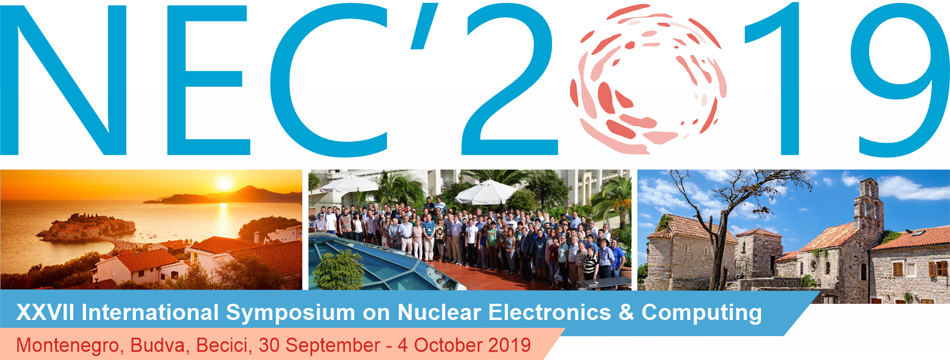Speaker
Prof.
Ivan Vankov
(Institute for Nuclear Research and Nuclear Energy, Bulgarian Academy of Sciences)
Description
GEM (Gas Electron Multiplier) detectors are developed to measure the muon flux at the future HL (High Luminosity) LHC. A radiation monitoring system to control the dose absorbed by these detectors during the tests was designed. The system uses a basic detector unit, called RADMON. There are in each unit two types of sensors: RadFETs, measuring the total absorbed dose of all radiations and p-i-n diodes – for particle (proton and neutron) radiations. The system has a modular structure, permitting to increase easily the number of controlled RADMONs – one module controls up to 12 RADMONs.
For the first test, a group of 3 GEM chambers called supermodule was installed at the inner CMS endcap at March 2017. One RADMON was placed inside of this supermodule for dose monitoring and through local system controller, it transfers the measured data to the test experiment data acquisition system. The real dose data, registered for this long period are now processing and the more important results will be presented to the NEC 2019.
Primary author
Prof.
Ivan Vankov
(Institute for Nuclear Research and Nuclear Energy, Bulgarian Academy of Sciences)
Co-authors
Mr
Georgi Mitev
(INRNE, BAS, Sofia)
Dr
Lubomir Dimitrov
(Institute for Nuclear Research and Nuclear Energy)
Dr
Plamen Iaydjiev
(INRNE, BAS, Sofia)
Prof.
Vladimir Dimitrov
(University of Sofia)

